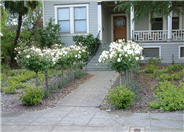
Common name:Tree Roses
Botanical name:Rosa Tree varieties
Tree roses are actually shrubs that have been grafted or grown in a way that looks like a tree, ie with a trunk. Tree roses can be floribundas, hybrid teas, or grandifloras. They are typically used as specimen plants. Make sure the plant is tied to a stake in case of strong winds.
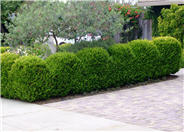
Common name:Japanese Boxwood
Botanical name:Buxus microphylla japonica
Japanese Boxwood is often used as a hedge. It is compact, with small bright green leaves. It can reach 4'-6' tall and wide or be kept smaller through pruning. It can be sheared to shape. It does better in areas with milder winters.
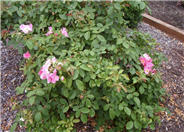
Common name:Shrub Rose
Botanical name:Rosa Shrub varieties
The dark green, heavily veined leaves of this bushy shrub are strong support for the pure white or pink, nearly double flowers it produces. This is a very tolerant, heavily scented plant with an impressive fall color. Also, large hips appear intermittently with this plant.
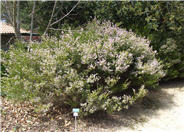
Common name:Pink Breath Of Heaven
Botanical name:Coleonema pulchellum
Pink Breath of Heaven is a fine, textured, wispy shrub growing 5' high with tiny pink flowers and fragrant leaves. It blooms sporadically throughout the year. It needs good drainage and is drought tolerant.
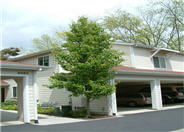
Common name:Bradford Callery Pear
Botanical name:Pyrus calleryana 'Bradford'
The 'Bradford' is a deciduous tree that grows to a size of 25'-30'. Profuse clusters of single white flowers are borne in the spring from noticeably sweeping branches.
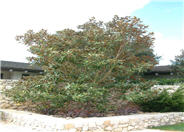
Common name:Little Gem Dwarf Southern Magnolia
Botanical name:Magnolia grandiflora 'Little Gem'
This slow-growing evergreen tree will grow 15-20' high x 8-10' wide and has an abundance of leathery, dark green leaves with fragrant, white flowers that bloom during summer.
Sustainable Fertilization
If you mulch heavily as recommended in the compost and mulch fact sheets you should not need traditional fertilization. Sustainable landscapes fertilize themselves as soil organisms break down and recycle the dropped leaves into nutrients.
Click in the green box for more information
| Designer: | Arbor and Roses |
Photographer: GardenSoft |
Soils and Compost:
Incorporate compost 6" into your soil to retain water, reduce compaction, feed earthworms, and provide valuable nutrients to your plants.
Water Saving Tip:
Integrated Pest Management:
Attract, or buy beneficial insects such as ladybugs and lacewings to control pest outbreaks in your garden.

